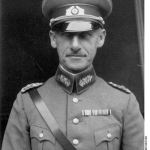An After Action Report and TOAW IIII Play Test
Mark (Axis) vs. Mike (Allies)
The specifics of this campaign are detailed in the World War II and Odessa Files: Take Two. This is a monster - easily one of the largest wargame scenarios available. It runs 158 turns - far shorter than the even larger 405 turn “Fire in the East” by Stefan and Kristian Stefensen or its remake “Directive 21” by Steve Sill and Rick Kesler. May of 1942 was selected as the point at which Allied Forces came close to parity with the German military - and fit under the limitations of 2,000 units per side. Any wargamer veteran can tell you that any game starting out in 1939 or even 1941 is a painful experience for the Allied Player.
In this scenario, I’ll be playing as the Axis Forces, but I will also run a full 1941 - 1945 Grand Campagin under “War in the East” - so as to comment “beyond the game” for both sides.
In mid-1942, the Axis Forces were at the height of their power. Continental Europe was under the Nazi banner. Portugal, Spain, Sweden and Switzerland maintained a pro-German neutrality. Only Tito’s partisans, the People’s Liberation Army, in Yugoslavia offered significant resistance to nazi occupation.
England remained defiant and bolstered by the arrival of American forces. By this point, an Axis invasion of England (Operation Sealion) was out of the question. Instead, the English and Commonwealth Army waged war against Germany and Italy in the sands of North Africa - to Egypt and Libya.
Finland was a co-belligerent rather than an actual ally of Germany. They cooperated to varying extents, but Mannerheim refused any kind of direct attack against Leningrad (now known as St. Petersburg). Finnish forces would fight alongside the Germans on the Karelian Front where the Lend Lease Port of Murmansk was a primary objective. Kandalaksha and Archangelsk were also Lend Lease Ports, with shipments divided amongst them.
The rest of the War - and where the vast majority of the fighting took place was on the Eastern Front. This stretched from Leningrad all the way to the Black Sea.
And that sets the stage.
Turn 001 starts with a cease fire allowing for some redeployment of units from their historical starting positions. The German Army in France is a bare-bones affair - sparsely defended. This warrants immediate attention. While the Allied are not likely to attempt an invasion of mainland Europe in 1942, there’s no need to tempt them with vacant beach landing zones. Better than a dozen reserve infantry divisions are deployed throughout France by rail to solidify the Atlantic Wall. A lot of reserve divisions were deployed in this manner historically - occupying beaches in France sounds like pretty nice duty compared to the Eastern Front.
Otherwise, Germany has very limited reserves at its disposal - two panzer divisions and the 2nd SS “Das Reich” motorized division. Almost everything else is in Russia.
The map is huge… if printed out it would take up an area roughly 9 feet wide by 7.5 feet tall. Screenshots will be limited to about 3 per turn focusing on the most active areas.
Axis Strategy will be discussed in Turn 2. Here are two screenshots of Army Group North - the 16th and 18th Armies. This area is expected to be quiet for a while, so they can be safely shown and set aside.

Wilhelm Ritter von Leeb - Retired from service in 1938; recalled for the occupation of the Sudetenland; retired afterwards. Recalled again and given Command of Army Group C for the Battle of France - opposed Hiter's invasion through the Lowlands. His forces broke through the Marginot Line and he was promoted to Generalfeldmarschall. Given command of Army Group North for Operation Barbarosa, he failed to take Leningrad and subsequently asked to be relieved of command taking offense at Hitler's intervention from afar, made effective in January 1942.
Continued here - http://www.odessatalk.com/2012/05/operation-fridericus-case-blue-t002/